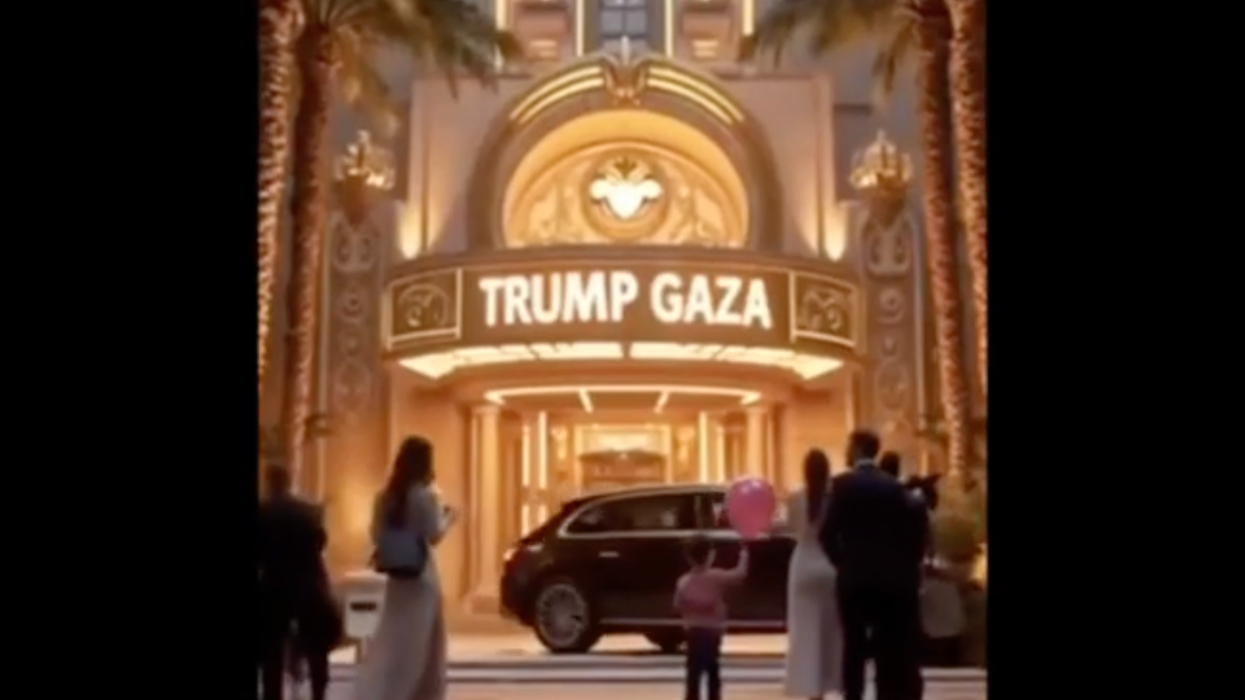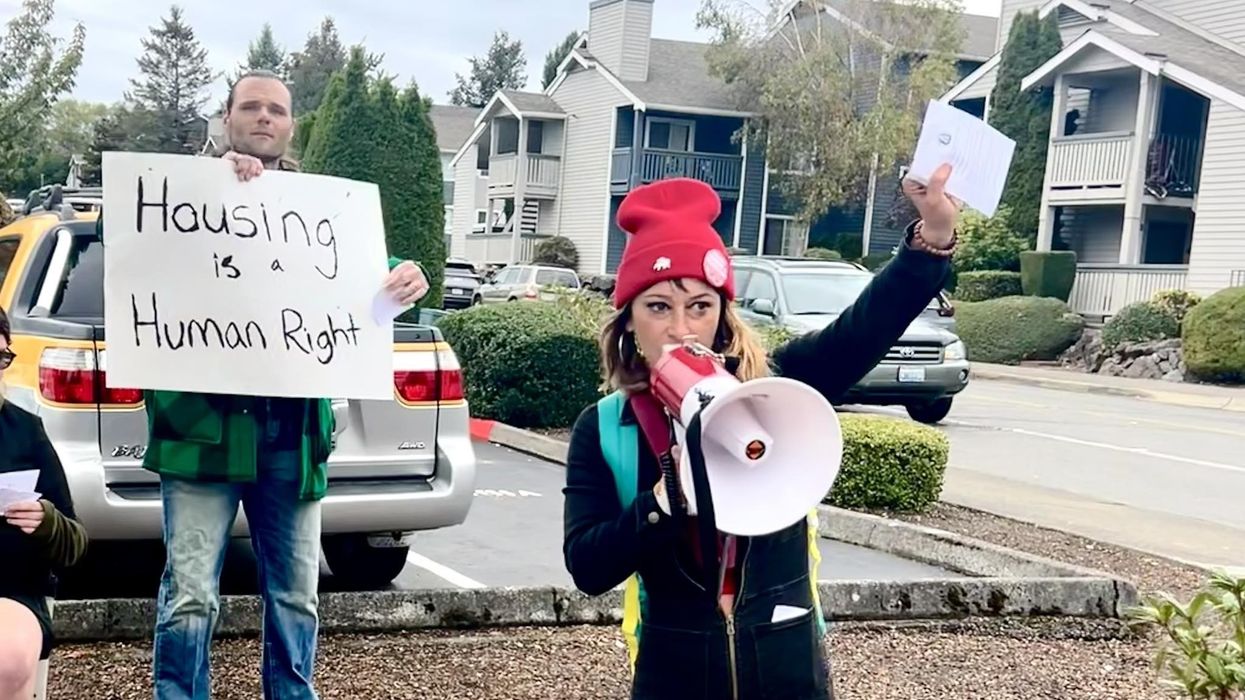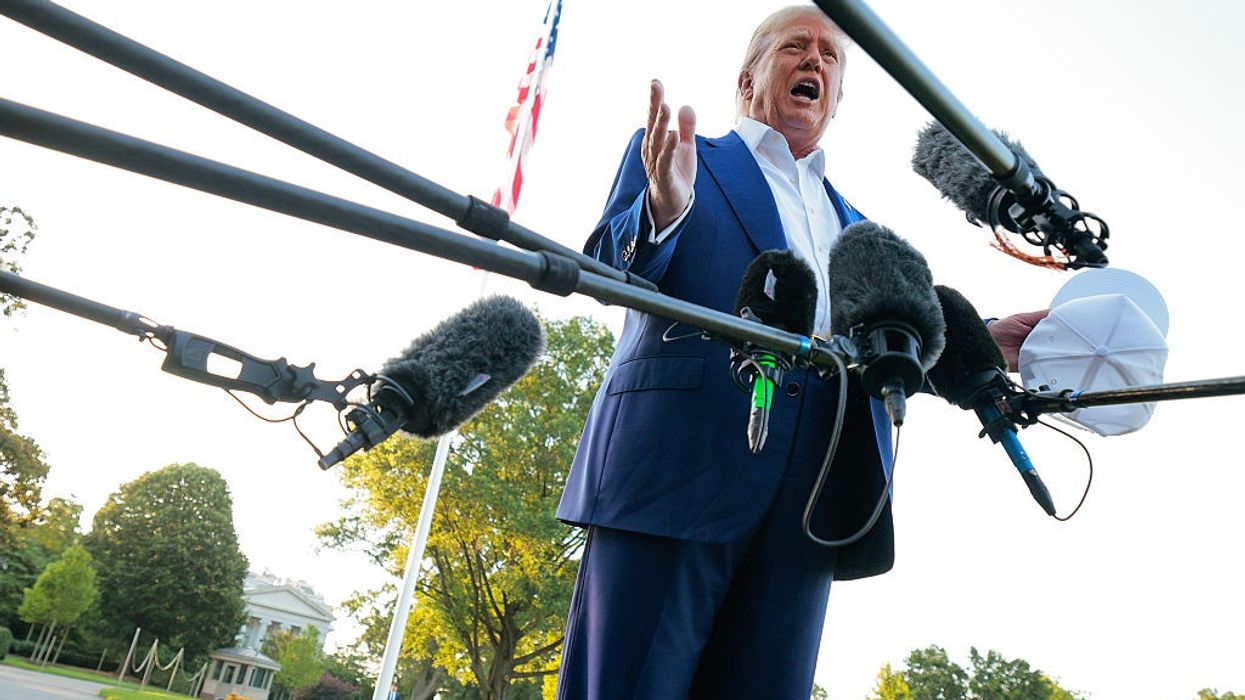Trump Is Just the Gilded Nail in the Coffin of the American Century
If the first 25 years of the 21st century have proved anything, it is that America was emotionally, morally, and intellectually incapable of acting as a global leader.
It is tempting to distill all the chaos, hatred, and blood spilled in 2025 into the small frame of one man: Donald Trump.
It is true that Trump richly deserves the accolade of being the worst, but also the most consequential president in modern US history.
This president has bombed Iran, allowed Israel to invade Southern Syria, finished the decimation of Gaza, and embarked on the annexation of the occupied West Bank. The Emirati-funded and armed ethnic cleansing of Sudan means little to him. A death toll of up to half a million Sudanese is of no consequence.
Three months after unveiling his "big beautiful peace plan," a reality is established on the ground in Gaza that is its parametrical opposite—an ugly, petty recipe for war without end.
Never has so much been expected of a mind that is truly so small.
Israel is not even content to leave over 2 million Palestinians in Gaza shivering and starving in tents. When storms flooded them out, Israelis cheered.
Killing Palestinians has become an Israeli national obsession.
Israel Katz, the defense minister, has just announced plans to settle northern Gaza permanently: “We are deep inside Gaza and we will never leave all of Gaza; there will be no such thing. We are here to protect and prevent what happened," Katz said.
So much for any hope of a full withdrawal envisaged by the Trump plan.
A 'Moral Collapse'
Bounced like a pinball between Moscow and Kyiv, Trump has been unable to secure in Ukraine in a year what he promised as a candidate to achieve within days.
When Bob Reiner, a Hollywood director and long-time critic, was killed along with his wife by his son, in a family tragedy so deep it should elicit sympathy from any parent, Trump’s bile could not contain itself.
Reiner’s death was his own fault because he had driven others "crazy" with his obsession with Donald Trump, the president declared on Truth Social.
This is the mentality of the man to whom every rich Arab state in the Middle East has paid good money and now looks to for salvation.
Never has so much been expected of a mind that is truly so small.
This is the man whom Syria expects to force Israel to stop arming the Druze in Sweida, as a Washington Post investigation disclosed.
This is the man whom Turkey hopes will force the Kurds to join the as-yet nonexistent national armed forces of Syria; the man whom Qatar hopes will install an international stabilization force on the borders of Gaza, the man from whom Saudi Arabia wants a nuclear reactor, the man on whom the leader of Egypt—most likely the next Arab leader to fall—depends on for his very survival.
The only power that profits from this chaos is the power that is not involved: The meta story of 2025 is the confirmation of China as crown prince, as a world leader in waiting—a rise that has been handed to it on a silver plate.
More valuable to China than all its own strategic patience, planning, and thinking added together has been the moral collapse of America. All China has had to do is weather Trump’s tariff tantrums and watch the US collapse unprompted under its own weight.
Turning Victory Into Defeat
How did the US pluck defeat from the jaws of victory? Arrogance, hubris, the belief that as the last man standing, we were the only man standing, are all part of the story.
So the outgoing liberal elites of America and Europe, who have been in power for so long, are surely deluding themselves if they ascribe the chaos of 2025 to the rise of the extreme right at home and abroad.
We are not only seeing out one terrible year, but the first quarter of the century. It has been a terrible start.
The wars fought in defense of democracy destroyed all belief in the system at home.
If you compare how powerful America and the West were in Christmas 1991, when I watched the Soviet flag descend on the building of the Russian Supreme Soviet and chart a course to where they are now, you can only come to one conclusion: that when America had the chance to become the world’s uncontested leader, it blew it.
In 1991, America held the monopoly over the use of force abroad. Today, there are as many drone attacks as there are state actors or non-state actors who own them.
In 1991, Russia was on its knees. Today, its forces menace not just Ukraine but the whole of Western Europe.
In 1991, the streets of Russia were so pro-Western that there was a debate in the media as to whether they should continue using the word West, as Russia was now part of it.
Today, they are prepared to sacrifice a whole generation of Russian youth in a war that is framed in Moscow as a war with America.
Losing wars is another part of the jigsaw.
The Pentagon and NATO headquarters in Brussels should really have asked themselves a long time ago, why Western alliances "of the willing" have not won a war since Kosovo in 1998.
Interventions in Afghanistan, Iraq, Yemen, Libya, and Syria have all been defeats. Whether those interventions were declared or undeclared, whether they were led from the front or from behind closed doors, the result was the same.
The quick thrill of toppling regimes was followed in each country by the sober reality of insurgency, civil war, and ultimately military withdrawal.
Imagined Foes
Ideology also played its part. I do not mean the ideology of "radical Islam," but the ideology that made the US and its allies such an aggressive world force.
It goes far beyond 19th-century imperialism, which, by comparison, was fairly limited in its ambitions.
It is the belief that at any one time in history, Western liberal democracy is faced by an implacable, transnational, and existential foe.
During the Cold War, it was communism. After it, al-Qaeda became a world threat. Then came Daesh, or the so-called Islamic State.
Today, it is the Muslim Brotherhood; and soon, it will be Islam itself.
Even though these imagined foes have nothing in common with each other, they are given the same characteristics.
During the Vietnam War, it was the Domino theory, a theory that warned if the dominoes of Southeast Asia were allowed to fall to communism, Australia would be next.
In the days of al-Qaeda, this was replaced by "the crescent of crisis," which stretched from Iraq to Somalia.
This ideology preexisted major events like the attacks on the Twin Towers in 2001, and helped transform what should have been a limited anti-terrorist operation into an all-out "war on terror."
It was critical to this project that the West did not define the enemy.
Hence, Vladimir Putin’s first bloody war as prime minister and later president of Russia, the war he launched on Chechnya, was merrily folded into George W Bush’s "war on terror."
The then-British Prime Minister Tony Blair was duly sent by Washington to invite Putin to meet Queen Elizabeth II, as the horrors of Russian counterinsurgency were tried out on the Chechens 22 years before the same techniques were applied to the Ukrainians.
But what did it matter, Western intelligence calculated. They were only Muslims.
Now, 25 years on, America seems congenitally incapable of learning from its mistakes.
Terminal Decline
When Dick Cheney, the former vice president and the architect of the war on terror, died recently, the tributes came in thick and fast.
Former President Bill Clinton extolled Cheney's "unwavering sense of duty," while former Vice President Kamala Harris called him a "devoted public servant" who gave "so much of his life to the country he loved.” CNN's front-page story lauded him for helping "his daughter stand up to Trump."
They praised a man who constructed an elaborate double lie as a pretext for the invasion of Iraq: that Saddam Hussein had weapons of mass destruction and that he had links with al-Qaeda.
We only need a real financial collapse to recreate the conditions of the 1930s.
In 2004, Cheney said: "I continue to believe, I think there's overwhelming evidence [of a]… connection between al-Qaeda and the Iraqi government."
There have been many attempts to assess the human cost of the Iraq war. The latest in 2023 by Brown University researchers, using United Nations data, concluded that the invasion of Iraq and related "war on terror" campaigns killed more than 4.5 million people.
This figure includes about 1 million direct deaths and 3.5 million indirect deaths. The wars also killed 7,000 US troops and 8,000 contractors, according to the study.
There is something in the psyche of an imperial power in terminal decline that blocks out the obvious truth: The wars fought in defense of democracy destroyed all belief in the system at home.
Even before a new generation of ideologues assumed power in Washington, the old regime of liberal Zionists, like Joe Biden, had armed and allowed Israel to do most of the killing in Gaza, the West Bank, south Lebanon, and Syria.
So, the collapse of moral governance is truly a bipartisan achievement. The year 2025 capped 25 years of failure.
A New Leadership
What happens next? It is alas very far from being goodbye to all that, because all of the unfinished business in the Middle East and Ukraine will keep on coming back to haunt the retreating West.
You can only keep on supporting Israel by blinding yourself to the daily reality of what Israel is doing in the West Bank.
Even if Israel changes its prime minister and slows down its settlement scheme, it will become evident that the Palestinian state recognised as a sovereign nation by 157 of the 193 UN member states is impossible to create.
It is to the West Bank, not Gaza, that all eyes should be turning in 2026.
Israel’s mission to annex the West Bank can be as clearly seen through Christian eyes as it is through Muslim ones, as Middle East Eye's Lubna Masarwa and Peter Oborne report on how Christians in Bethlehem face an existential threat.
The pressure on governments by their people will grow. They will do their best to outlaw demands for Palestinian justice. But the more they seek to oppress, the more of a domestic civil rights issue Palestine will become.
The real sin of British Prime Minister Keir Starmer’s government has not so much been to keep as close to Washington as possible on Israel, but to establish the infrastructure of an authoritarian government that will be fully used by his potential successor, Nigel Farage.
The late Prime Minister Margaret Thatcher’s refusal to grant "special category status" to the 1981 Irish hunger strikers is being replicated today, even though her response led to the death of 10 men, including the MP Bobby Sands, and a government capitulation on the core demand.
No matter.
Lord Timpson, the UK's prisons minister, is intrepidly following in Thatcher's footsteps in the way he is dealing with the hunger strike by youths on remand for taking part in direct action on behalf of Palestine Action.
Timpson said: "We are very experienced at dealing with hunger strikes. Unfortunately, over the last five years, we have averaged over 200 hunger strike incidents every year, and the processes that we have are well-established and they work very well—with prisons working alongside our NHS [National Health Service] partners every day, making sure our systems are robust and working—and they are."
We will see in 2026 how long that confidence in the system lasts if one of those hunger strikers dies. We will also see the divide that has opened up between Israel and the Jewish diaspora getting wider.
If 2025 was the year when the fig leaf around Israel’s true genocidal character dropped away, the first years of the next quarter of this century will be dominated by more Jews in America demanding and creating an entirely different political leadership.
The ideologues of "Israel First" are fighting an ugly and vicious losing battle, and they know it.
This is supposed to be America’s century. If the first 25 years have proved anything, it is that America was emotionally, morally, and intellectually incapable of acting as a global leader.
At the moment that failure is leading to the rise of the extreme right all over the West and potentially the rise of fascists. We only need a real financial collapse to recreate the conditions of the 1930s.
If that, in turn, spurns a new generation of leaders capable once again of governing with authority, morality, and modesty, then it will have been a lesson worth waiting for. But at what price?



